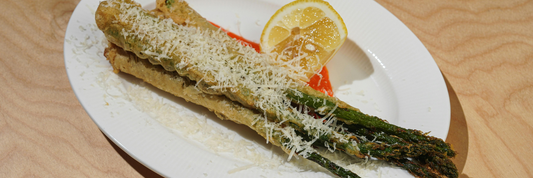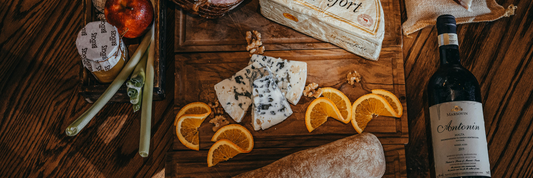In today’s food industry, meat tray packaging is more than just a container, it’s a tool for preservation, presentation, and branding. For meat shop owners and food retailers, choosing the right food tray for meat impacts product freshness, customer appeal, and environmental footprint.
With rising consumer awareness about plastic waste, the demand for eco-friendly meat tray solutions is growing rapidly. Retail giants like ALDI, Walmart, and Woolworths have already committed to reducing plastic meat tray usage and shifting to compostable or recyclable options.
- The Complete Guide to Meat Packaging: Materials, Methods, and Shelf Life Solutions
- How to Package Frozen Meat: A Green, Safe, and Effective Guide
Types of Meat Trays on the Market

1. Plastic Meat Tray
Plastic meat trays (typically PET or PP) are lightweight, moisture-resistant, and cost-effective.
Advantages: strong barrier against leaks, compatible with vacuum sealing, easy to stack for display.
Drawbacks: limited recycling options in some regions, environmental concerns over single-use plastics.
Best use cases: high-moisture meats, chilled storage, long-distance transport.
2. Polystyrene Meat Tray
Polystyrene meat trays are made from expanded polystyrene (EPS) foam. They are common in supermarkets due to their low cost and cushioning properties.
Advantages: lightweight, insulating, protects meat from temperature changes.
Drawbacks: difficult to recycle, often ends up in landfills, not biodegradable.
Market trend: Many retailers are phasing out polystyrene trays in favor of eco-friendly meat tray options.
3. Eco-Friendly Meat Tray
Sustainable materials for meat trays include:
- Bagasse (sugarcane fiber) – compostable, heat-resistant.
- Molded pulp – made from recycled paper, easily recyclable.
- PLA bioplastics – plant-based, industrially compostable.
- Fiber trays – sturdy, microwave- and freezer-safe.
Advantages: biodegradable, supports brand’s green image, appeals to eco-conscious customers.
Certification labels to look for: BPI Certified, TÜV AUSTRIA OK Compost, USDA BioPreferred.
4. Food Tray for Meat with Advanced Preservation
Modern meat tray packaging can do more than just hold meat:
- MAP (Modified Atmosphere Packaging) – replaces oxygen with gas mixtures to extend shelf life.
- VSP (Vacuum Skin Packaging) – seals meat tightly to prevent spoilage.
- Smart packaging – includes QR codes for product traceability and freshness tracking.
Meat Tray Ideas for Better Branding

Your meat tray is part of your marketing. Here are meat tray ideas to make your product stand out:
- Use natural colors (brown kraft, bamboo) to reinforce eco-friendly branding.
- Add printed patterns or logos directly on the tray.
- Create dual-purpose trays that can go from fridge to oven or microwave.
Criteria for Choosing the Right Meat Tray Packaging

When selecting a meat tray or food tray for meat for your shop, consider these key factors:
- Material: Opt for eco-friendly meat tray options like bagasse, molded pulp, or recyclable PET to reduce environmental impact.
- Preservation ability: Trays should maintain freshness, prevent leaks, and avoid cross-contamination.
- Recyclability/Compostability: Choose materials that can be recycled or composted based on your local waste management infrastructure.
- Aesthetics and branding: Use trays that are visually appealing and allow for custom printing or logo placement to boost brand recognition.
- Cost and practicality: Balance your budget with reliable supply availability.
Comparing Different Types of Meat Trays
| Type of Tray | Advantages | Disadvantages | Eco-Friendliness Level |
|---|---|---|---|
| Plastic Meat Tray | Durable, moisture-resistant, affordable | Hard to recycle in some areas, single-use plastic | Low |
| Polystyrene Meat Tray | Lightweight, good insulation | Non-biodegradable, difficult to recycle | Very low |
| Eco-Friendly Meat Tray | Biodegradable, boosts green brand image | Slightly higher cost | High |
| Fiber / Molded Pulp Tray | Easily recyclable, cost-effective | Not as moisture-resistant as plastic | High |
| Bagasse Tray | Compostable, heat-resistant | Needs dry storage | High |
Practical Tips for Meat Shop Owners

- Start small: Test a few eco-friendly meat tray models to gauge customer response.
- Find a reliable supplier: Partner with providers that have quality certifications and clear sourcing.
- Promote your green brand: Use in-store signage or print “biodegradable tray” information directly on your packaging to attract eco-conscious shoppers.
- Optimize costs: Buy in bulk or share orders with other local businesses to lower prices.
Conclusion
Switching to eco-friendly meat tray solutions not only helps protect the environment but also builds a positive, modern brand image.
If you are currently using plastic meat tray or polystyrene meat tray, now is the time to explore sustainable meat tray packaging alternatives.




